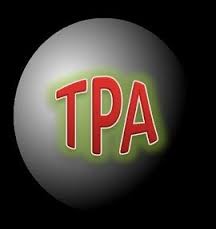This should be a Jeopardy question: Who is the person that performs the annual administration of a retirement plan and makes sure it’s in compliance with IRS and DOL regulations?
I’d wager that most people wouldn’t get it right. Frankly, it’s such a crazy name too — Third-Party Administrator. Who came up with that? Was that the best they could do for one of, if not the, most important person involved in your retirement plan? Regardless of the lousy name, let’s start with the basics.
WHAT IS A THIRD-PARTY ADMINISTRATOR (God Bless the acronym!)?
A TPA is a pension administrator. A TPA is responsible for many of the day-to-day operations of a retirement plan. A TPA performs several functions, including, but definitely not limited to, annual administration, amending and restating plan documents, assisting in distributions from the plan, loans for participants, all ADP/ACP non-discrimination testing, calculation of plan and participants contribution limits, allocation of employer contributions and forfeitures, preparation and filing Annual Form 5500s and schedules.
What I left out are what I believe (and I don’t think I’m alone here) are two of the most important duties of a TPA:
1. Keeping a retirement plan in compliance with IRS and DOL regulations and;
2. Retirement Plan Design.
Why are these two items so important? Let me answer this way (which may be familiar to anyone who has seen “The Revenant” with Leonardo DiCaprio — brilliant movie and performance by the way), “The wind cannot defeat a tree with strong roots.” Dramatic, oh yes, but absolutely true.
A TPA is the backbone of any retirement plan. The success (or failure) of a retirement plan can be measured by its design and whether it complies with all the IRS and DOL rules and regulations. It’s an intricate balance, but this is where your TPA can (and should) really shine.
DOL/IRS Compliance
Here’s the long and the short on compliance. There are numerous rules and regulations that must be followed in a retirement plan, as the name alone implies. I’m not about to start quoting regulations to really bore everybody (hopefully I haven’t already), so here’s the shorter version from what I’ve learned.
Compliance issues generate Red Flags, which I’ll explain before before I go any further. Red flags are triggered by information reported in the annual Form 5500 filings. These filings are all public information (in case you didn’t know). Anyone can locate and review these tax filings. Anyway, there are various public websites and databases available that use these tax filings to compile reports, generate scores and identify issues within the plan. Those issues generate red flags. The most common red flags (compliance issues) I see are for Insufficient (or non-existent) Fidelity Bond Coverage, Corrective Distributions — meaning failed discrimination testing, History of Corrective Distributions — again failed discrimination testing but in at least 3 consecutive plan years, Reduced Employer Contributions, Failure to Remit Contributions and Missing Form 5500 filings.
So why does Compliance matter? It matters because if I can identify all these issues in a matter of minutes, so can the DOL and the IRS. The DOL and IRS may not catch it right away but so what? What do you think will happen if and/or when they do? Are you ready for an audit? Sorry, but I’d rather get a root canal.
Having the right TPA on your side will identify and rectify these issues long before the DOL and IRS will. And those corrective distributions I mentioned ties right into the second most important duty of a TPA — plan design.
Retirement Plan Design
A colleague of mine once said that a retirement plan is only as good as its design. I remember thinking, wow that’s a great sales pitch, but guess what? It’s so true. Obviously, there are dozens of reasons to have a retirement plan. Millions of hard-working Americans will be relying solely on these benefits one day when social security disappears (which is going to happen eventually), but here’s what I also know.
Retirement plans can not only be designed to “maximize” your retirement savings, they can “minimize” your taxes all at the same time. If you’re an employer providing this great benefit to your employees, wouldn’t you want to take advantage of that? Why shouldn’t you? You obviously cared enough about your employees to provide the benefit in the first place, so why not use the benefit yourself? Possible answer, perhaps no one explained how. That’s the difference a TPA can make.
The right TPA can customize a plan for your specific needs. Not to mention like everything else in life, your needs can change from year to year. The demographics of your company can change year to year. People come, people go. The right TPA will revisit your plan design every year and work with you to meet your needs, achieve your objectives and help you reach your goals. Why have a plan if you’re not maximizing its potential?
Plus, let’s get back to those Corrective Distributions. Contributions made into a retirement plan are tax deferred. However, when a plan issues Corrective Distributions, which are contributions returned to the employer because they contributed too much to the plan “as designed” and allowed for, they become taxable. Therefore, you can no longer claim the tax deduction or receive the tax benefit. Makes sense, but yet it doesn’t. Having the same issue year after year after year doesn’t make much sense. Why not take steps to correct it? Can’t help myself but I’ve got to say it again, that is the difference the right TPA can make. There are features that can be incorporated in a plan to eliminate corrective distributions and enhance tax savings such as new comparability, age weighted, safe harbor, 401(k), auto enrollment, etc. that should be visited and reviewed every year.
Thanks for taking the time to read this article. I’d like to end it with a few parting questions, “Are you maximizing your retirement savings while minimizing your taxes?” “Do you know who you’re TPA is?” Are you experiencing Corrective Distributions in your plan every year? ‘When was the last time you spoke to anyone about plan design?” “Is your plan design based upon on a standard prototype document, or was it designed specifically for your needs?”
If you’re not sure of the answers to any of these questions, I encourage you to find out. Never hesitate to reach out to any of your providers and ask the hard questions. Its when they don’t give you the answers you’re looking for you can decide who to call next.







